The Gift of South Dakota
Subscriptions to South Dakota Magazine make great gifts!
Subscribe today — 1 year (6 issues) is just $29!
Mystery Mosaics in Hughes County
Aug 1, 2012
Mysteries are rare these days in South Dakota’s hill country. Nearly every square foot of grass has been explored by hunters, ranchers, farmers, historians and archaeologists. Although most everything has been identified, a few finds still baffle researchers — like the stone mosaics of snakes and turtles on bluffs above the Missouri and James rivers. The snake outlines stretch several hundred feet and are made of boulders the size of footballs and bowling balls. The turtle effigies are smaller; they could fit inside a single car garage.
We explored the mystery of the effigies in 2003. Ray Salathe, a cattle rancher, told us he drove over a stone snake pattern many times before realizing what it was. “We didn’t know it was a snake until we got to looking things over,” he said. Salathe never learned who placed the stones in the shape of a snake, even after archaeologists and historians visited his ranch and nearby buttes to study the rocks. “They figure the Indians made them,” he said. “Some think the war parties camped up there because it is so high you can see forever and there’s a spring for water right below the hill. I’ve heard the theory that the stones had something to do with honoring an Indian chief who was killed there. How true it is, I don’t know. Neither does anyone else.”
Eighteen miles northwest of Salathe’s ranch lies Medicine Knoll, which is home to both turtle and snake outlines. The butte that rises about 400 feet above the town of Blunt in Hughes County held special significance to the late Vine Deloria Jr., a respected scholar and author. His great-grandfather, Saswe, survived a surreal experience at Medicine Knoll with rattlesnakes while on a vision quest in 1831.
Saswe had been praying night and day for two days without food or water. On the afternoon of the third day, he was no longer visible on the hill. His mother became frightened and asked a cousin, Brown Bear, to see if Saswe had fainted. As Brown Bear rode to the top of Medicine Butte, his horse became nervous so he tried to turn back. Suddenly the horse and rider found themselves surrounded by hundreds of snakes.
Determined to find his cousin, Brown Bear swung his rope at the snakes to open a path. He found a large bundle of snakes writhing back and forth over Saswe’s prostrate body. He figured he had fainted and the snakes, finding his warm body, had swarmed over him and killed him.
Brown Bear returned to camp to tell what he had seen. The family was devastated and mourning began. But suddenly Saswe walked into the camp. When asked about the snakes he was perplexed, remembering nothing about them. The account was among the 19th century stories passed down within Deloria’s family. Saswe grew to be a respected Yanktonai Chief, so his vision quest added even more mystery to the snake mosaics on Medicine Butte.
According to the Deloria family history, the rattlesnake effigy was already in place on the butte in 1831 when Saswe did his vision quest. Deloria says to the best of his knowledge, the origins of the mosaics are unknown. “Nobody I know in the scholarly world or the Indian worlds can say for certain how old they are or who made them or even why they made them.”


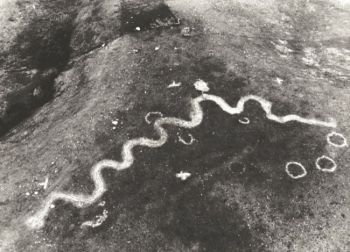
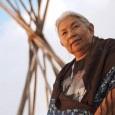
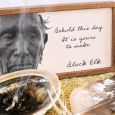
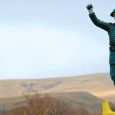
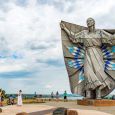
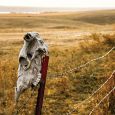
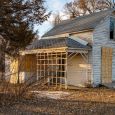


Comments
Great story!
I saw an effigy like this deep in a pasture. It was an fascinating experience to actually walk around the rocks. If anyone would ever get a change to see these effigies up close i would recommend doing it.
https://en.m.wikipedia.org/wiki/Serpent_Mound
Similarities noticed with mound builder culture